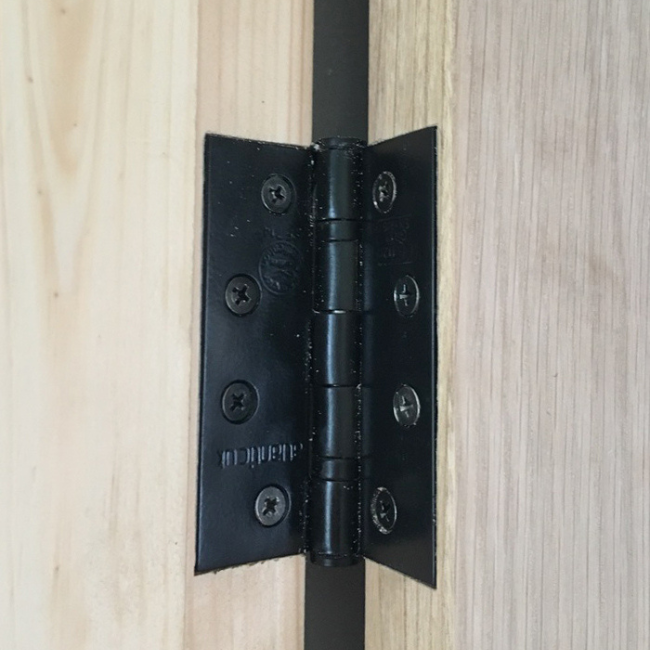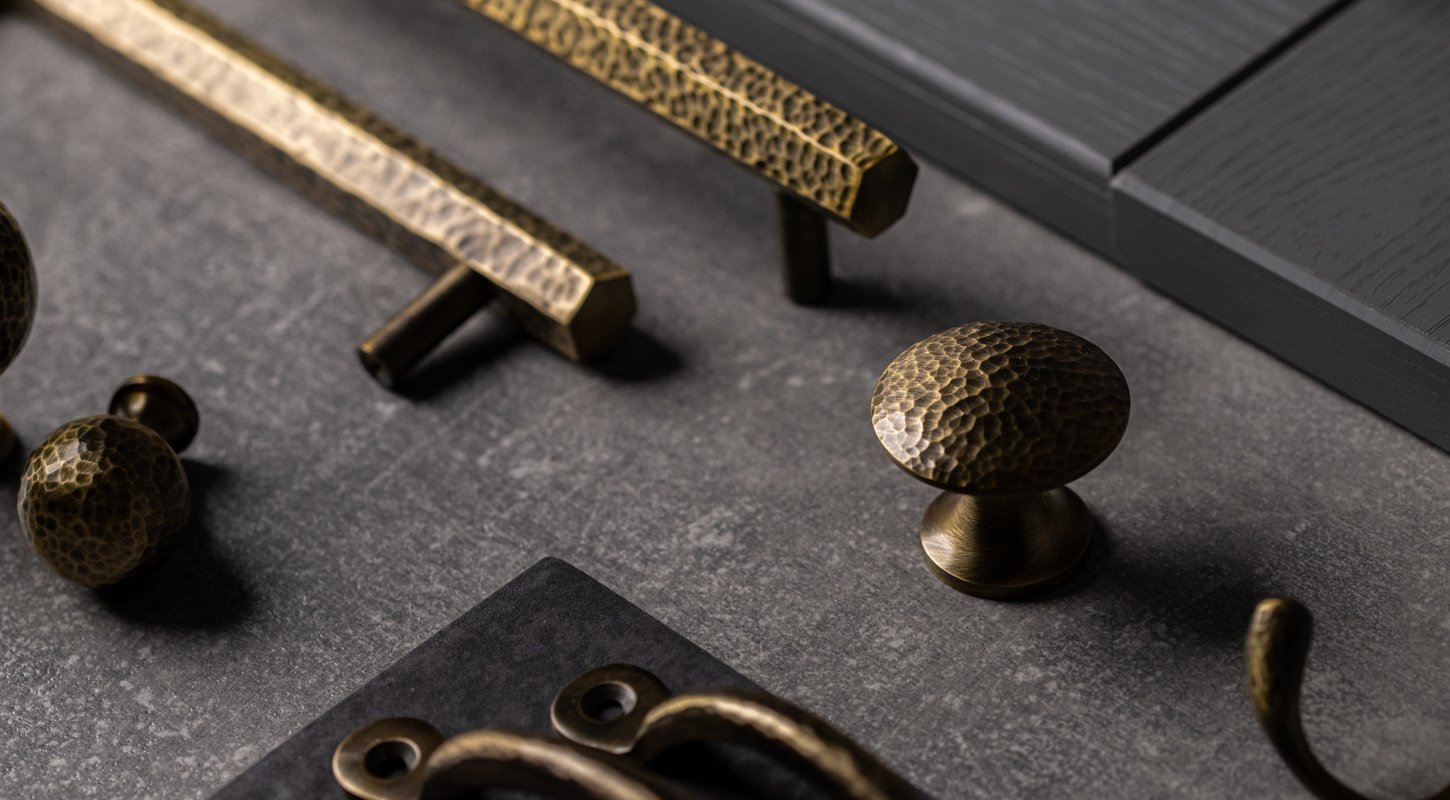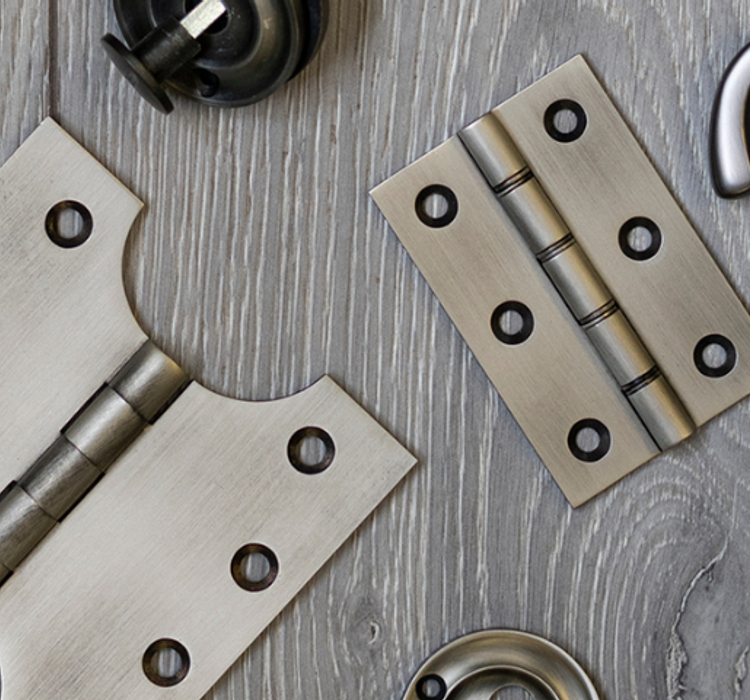If you are wondering what a butt hinge is, how it is used, and what your carpenter or joiner is talking about when they mention leaf width, pitch and bearing type, read on! We have all the insider information you need to be a hardware guru.
What Is A Butt Hinge?
A butt hinge is the most common hinge used on doors in our homes. But did you know that the choice of design can make such a difference to the smooth operation and proper functionality of your door? And how do you choose the right one? Read on for a simple guide to help you make the right decision.
Anatomy of a Hinge
A butt hinge is comprised of two pivoting metal plates with interlocking parts forming a barrel shaped knuckle in the centre, traditionally held together with a pin running through the centre.

These hinges are fitted between the door frame and the edge of the door, often recessed into a mortice to keep the hinge flush with the surface of the wood. As a rule of thumb, you want to have one hinge for every 30 inches of door. For a standard sized door that equates to two hinges. If the door is heavy, however, you may want to fit three hinges or two larger size hinges.
Butt hinges generally come in two standard sizes: 3 inch and 4 inch. The 4 inch butt hinges are designed for external doors and also heavy or large internal doors. The leaf length of a 4 inch butt hinge covers more of the door and provides greater stability and strength.
Most standard internal doors have 3 inch butt hinges. Usually fitted as a pair, top and bottom. The general guidance is to fit a hinge 5-7 inches from the top of the door and 10-11 inches from the bottom.


Polished Chrome Washered Butt Hinges


Matt Bronze Double Phosphor Washered Butt Hinges
Types of Bearings
There are several factors to consider before you choose the right hinges. Depending upon your door, the type of hinge bearing you choose is crucial. For example, a hinge with metal-on-metal moving parts will wear quickly and, if used frequently, will develop problems. Here is a simple guide:
Plain Bearing:
This is a basic butt hinge with metal-to-metal contact and no additional parts for friction reduction. These can also be fire rated. This type of hinge is best suited to doors with light use. If you choose this type of hinge we advise hinges with spun ends. This process fixes the pin in place.

Grease-Packed Bearing:
This is a plain bearing hinge that has been grease-packed in order to reduce friction and provide smoother operation. Button tipped butt hinges have a grease-packed plain bearing and are usually available in bright zinc or matt black velvet finishes.

Ball Bearing:
Strong and durable, ball bearing butt hinges are heavy-duty hinges, essential for big, heavy doors. Around the central pin there are ball bearings which create a permanently lubricated surface area. This allows for doors to swing smoothly with less force required.

Washered Bearing:
Another option is the washer hinge. Washered butt hinges are ideal for internal doors with light to medium use. These are often preferred in homes for doors that don't require ball bearing hinges as the size of the hinge knuckle is smaller and more discreet.
This type of washered hinge has phosphor washers which ensure noise free, smooth operation for many years.

We hope you found this helpful. If you have any questions, drop us a line below. See also Butt Hinges Explained (Part Two) for more info and technical details.
Comments


A handy step-by-step guide for cleaning your door hinges and keeping them in tip-top condition.
Read Article











